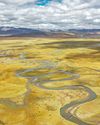China and India vie for supremacy in the region’s space exploration programmes – from the Moon to Mars

In analysing the space policies of lead Asian players like China and India, it becomes clear that both nations are increasingly focusing their efforts on a “space race” – or, more accurately, something of a “gold rush” in space. While these countries certainly have a long list of objectives they want to accomplish in space, there is no clear finish line, neither is there a definitive time frame.
Their approach contrasts starkly with the Cold War rivalry between the United States and the former Soviet Union, where getting there first mattered most. As a result, when the USSR’s Sputnik 1 burst into the skies in 1957, there was a lot of handwringing at NASA. Yuri Gagarin’s tryst with space destiny was a heartbreaker for the US space programme, which subsequently spurred the race to the Moon and the Apollo programme.
In comparison, the race for space among the Asian exploration programmes is not about simply beating the competition to the finish line. The long-term goals set by these nations are not focused on who plants their flag first. They are more focused on space activity – accomplished on as lean a budget as possible. India took great pride in successfully launching their Mars orbiter, Mangalyaan, in 2013 with a meagre overhead cost of USD70 million, compared to the USD671 million spent by the US on launching their Mars orbiter, Maven.
The low cost of India’s Mars orbiter could potentially draw in lucrative customers to its space programme, particularly noteworthy in a newly competitive environment that has seen the entry of private commercial actors like Space X, Moon Express and Blue Origin. The Indian Space Research Organisation (ISRO) announced a second Mars mission by 2020–21, and a first probe to Venus.
Esta historia es de la edición AG 03/2017 - 125 de ASIAN Geographic.
Comience su prueba gratuita de Magzter GOLD de 7 días para acceder a miles de historias premium seleccionadas y a más de 9,000 revistas y periódicos.
Ya eres suscriptor ? Conectar
Esta historia es de la edición AG 03/2017 - 125 de ASIAN Geographic.
Comience su prueba gratuita de Magzter GOLD de 7 días para acceder a miles de historias premium seleccionadas y a más de 9,000 revistas y periódicos.
Ya eres suscriptor? Conectar

A Spectrum Of Scarlet: The Symbolic Red Of Asian Flags
A common thread that unites many Asian flags is the prominent use of red, a colour rich with symbolism

Curry: A World of Flavour, Tradition, and Culture
From its humble beginnings in India, the concept of "curry" has evolved into a culinary language understood around the world

The Power Of Asian Red Fruits - Discover 10 Nutrient-Rich Gems Of The East
In the vast tapestry of Nature, Asia has gifted the world an array of unique and vibrant fruits, particularly those in shades of red. These scarlet-hued gems, packed with flavour and nutrients, not only add a burst of colour to your plate but also carry valuable health benefits. From antioxidant-rich goji berries to the exotic dragon fruit, let's explore some of the most popular red fruits from Asia and discover why they should be part of your diet.

Bhutan: A World Of Its Own
With its majestic monasteries, red-robed monks, charming rural villages, and vibrant festivals, the Kingdom of Bhutan is a Himalayan paradise that promises an enriching travel experience like no other

Take The Red Pill
From the vermilion torii gates of Japan to the famed rust-hued walls of India's Agra Fort, the burgundy robes of Burmese monks to scarlet chillies drying in the Bangladeshi sun, red is the quintessential colour of Asia.

70 Days for Our Land Animals
Raising awareness about conservation, the environment, and the land-dwelling species of the world

The Red Panda
Meet the elusive guardian of the Eastern Himalayas

Revealed Doctor Yellow
Japan Railways' special lemony Shinkansen is a rare sight to behold

The Mighty Yellow
Over 5,000 kilometres long and flowing through nine provinces and autonomous regions, the Yellow River is China's second largest, after the Yangtze, while its basin is deemed the cradle of Chinese civilisation

Wildlife Big Yellow Beauty
The popular "amelanistic" form of the Burmese python is considered among the most beautiful snakes - if that's your sort of thing